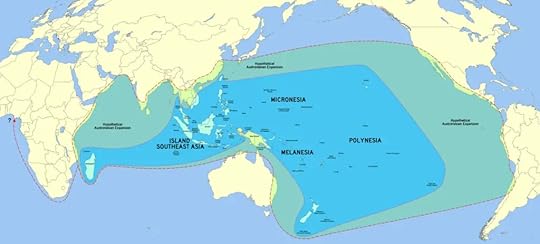Linguistics: How to Identify a Language Family

Episode 11 How to Identify a Language Famiy
Language Families of the World
Dr John McWhorter
Film Review
According to McWhorter, it’s the job of historical linguists to identify language families and to construct a prototype language they likely descended from.
He asserts the Polynesian (Austronesian) languages were the easiest to categorize into a family because they separated so recently (about 700 years ago). In fact many words are virtually identical in the different Polynesian languages. He gives Maori, Hawaiian, Samoan and Fijian as examples:
He gives the following examples:
[English – post]
Maori – pouHawaiian – pouSamoan – pouFijian – bouProto-Austronesian root – pou (majority rule + “p” to “b” shift common in many languages)
[English – taboo]
Maori – tapuHawaiian – kapuSamoan – tapuFijian – tabuProto-Austronesian root – tapu (t to k shift also common)
[English – cry]
Maori – tangiHawaiian – kangiSamoan – tangiFijian – tagiProto-Austronesian root – tangi
English – stay
Maori – honoHawaiian – honoSamoan – fonoFijian – vonoProto-Austronesian root – fono (because “h” is badly enunciated “f”)
In search for similarities, historical linguists tend to focus on words that are used frequently (which makes them less likely to change). American linguist Morris Swadesh made the following list of the most heavily used words in most languages: I, you, we, this, that, who, what, long, one, two, all, many, mall, man, woman, person, skin, blood, egg, hear and I.
McWhorter also gives two Indo-European examples:
[English – father]
Greek – paterLatin – paterGerman – vaterHindu – pitaa (“v” commonly shifts to “p”)Irish – athirPashto – plaarTochuan – pacar (“t” commonly shifts to “c”)Albanian – ataProto-Indo-European root – pater
English – bride or daughter-in-law
Old English – snoruSanskrit – susaRussian – shokha (in Russian “s” can shift to “k” and feminine words must end in “a”)Latin – nurusGreet – nuosArmenian – nusaProto-Indo-European root – snusos (must have started with “s” because they only drop off over time – they aren’t added)
Words suggesting Finnish and Hungarian belong to same language family:
Blood is “heri” in Finnish and “vér” in Hungarian.Hand is “käsi” in Finnish and “kéz” in Hungarian.Water is “ves” in Finnish and “viz” in HungarianWhat is “mïta” in Finnish and “mit” in Hungarian.Three is “koeme” in Finnish and “három” in Hungarian (representing “k”to “h” shift)Fish is “kala” in Finnish and “hal” in HungarianHead is “päã” in Finnish and “fö” in HungarianNest is “pesã” in Finnish and “fézek” in HungarianFilm can be viewed with a library card on Kanopy.
https://www.kanopy.com/en/pukeariki/watch/video/6120000/6120024
The Most Revolutionary Act
- Stuart Jeanne Bramhall's profile
- 11 followers



